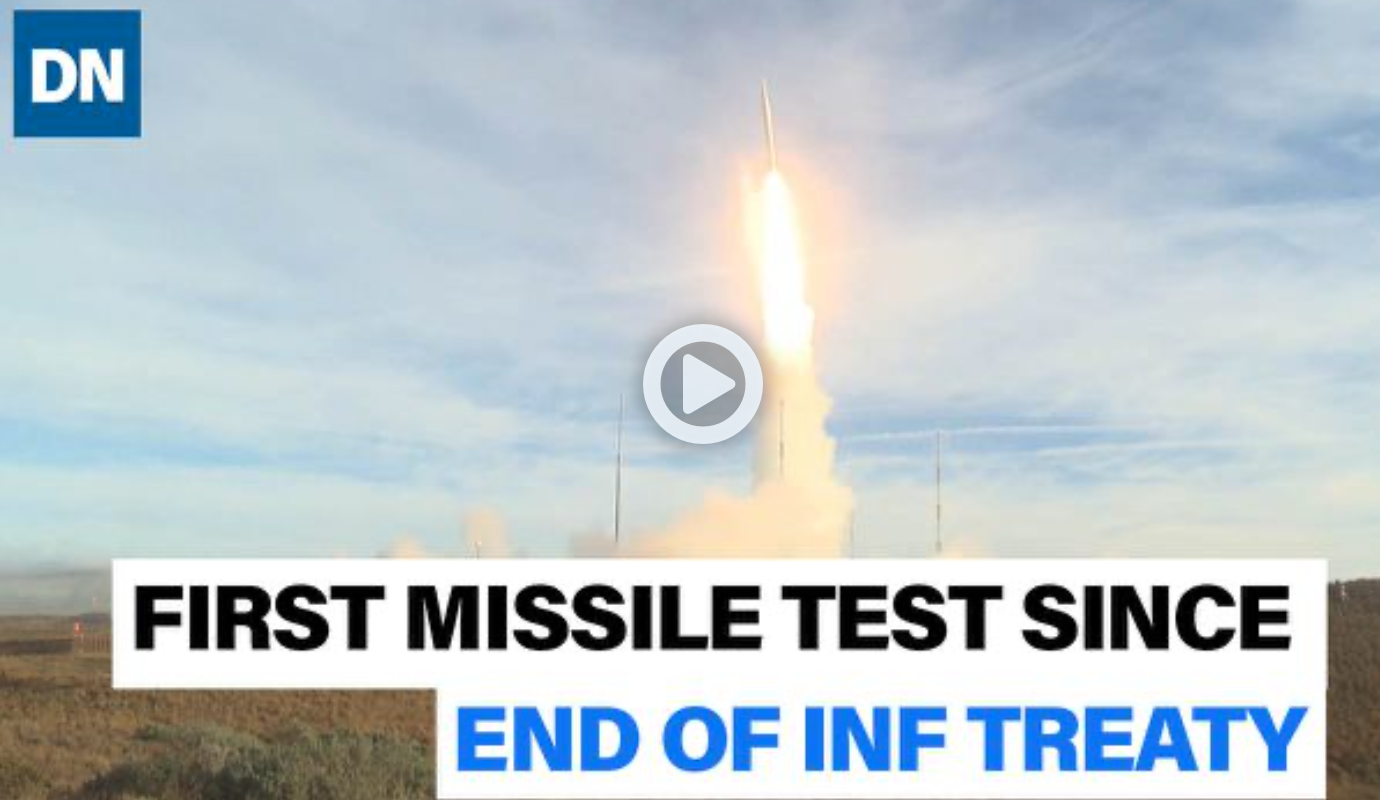ARTICLE BY: AARON MEHTA | defensenews.com

WASHINGTON — The U.S. has tested a ground-launched, intermediate-range ballistic missile with a range of more than 500 kilometers, the first such test since the country withdrew from the Intermediate-Range Nuclear Forces Treaty this year.
The test, which occurred Thursday at 8:30 a.m. PST, was configured to represent a conventional warhead. The test was anticipated for months, with Defense Department officials previously indicating they hoped to have it happen before the end of the year.
“The U.S. Air Force, in partnership with the Strategic Capabilities Office, conducted a flight test of a prototype conventionally configured ground-launched ballistic missile from Vandenberg Air Force Base, California,” Pentagon spokesman Robert Carver said in a statement. “The test missile exited its static launch stand and terminated in the open ocean after more than 500 kilometers of flight. Data collected and lessons learned from this test will inform the Department of Defense’s development of future intermediate-range capabilities.”
Within minutes of a video being released that showed the test, the missile-sleuthing community on Twitter went to work, quickly honing in on the possibility that the weapon was a modified version of a ballistic missile defense target missile used in ballistic missile defense tests. If so, that would fit in with the participation of the SCO, whose charge is to take existing systems in the Pentagon’s arsenal and tweak them to create new opportunities for use.
Carver declined to go into further detail on the design, and he wouldn’t say whether future tests of the system are currently planned.
However, he did tell Defense News that Northrop Grumman Innovation Systems was “the primary launch services contractor behind the execution of the mission.” That branch of Northrop is a major supplier of both solid-fuel rocket propulsion systems, missile interceptor boosters and target vehicles for missile defense tests.
A test in August, the first post-INF Treaty test of a ground-based cruise missile, involved a variant of the Tomahawk land-attack weapon launched from a Mark 41 Vertical Launch System. While the Mark 41 is the same launcher used in the Aegis Ashore missile defense system, the Pentagon said at the time that this was a different variation on the Mark 41 and does not mean that Aegis Ashore can be turned into an offensive capability — something Russia has long claimed in objecting to Aegis basing in Europe.
Expect similar complaints if it turns out Thursday’s test involved a missile defense asset.
Experts will now wait for more information — and observe the global reaction, which could include responses from Russia or North Korea, the latter of which has increased its aggressive messaging toward the Trump administration in recent weeks.
The United States exited the INF Treaty on Aug. 2, following through on a decision made late last year that the agreement no longer benefited American interests. The INF Treaty was a 1987 pact with the former Soviet Union that banned ground-launched nuclear and conventional ballistic and cruise missiles with ranges of 500-5,000 kilometers. However, the United States and NATO allies have for years declared Russia in violation of the agreement. Russia has denied those accusations.
